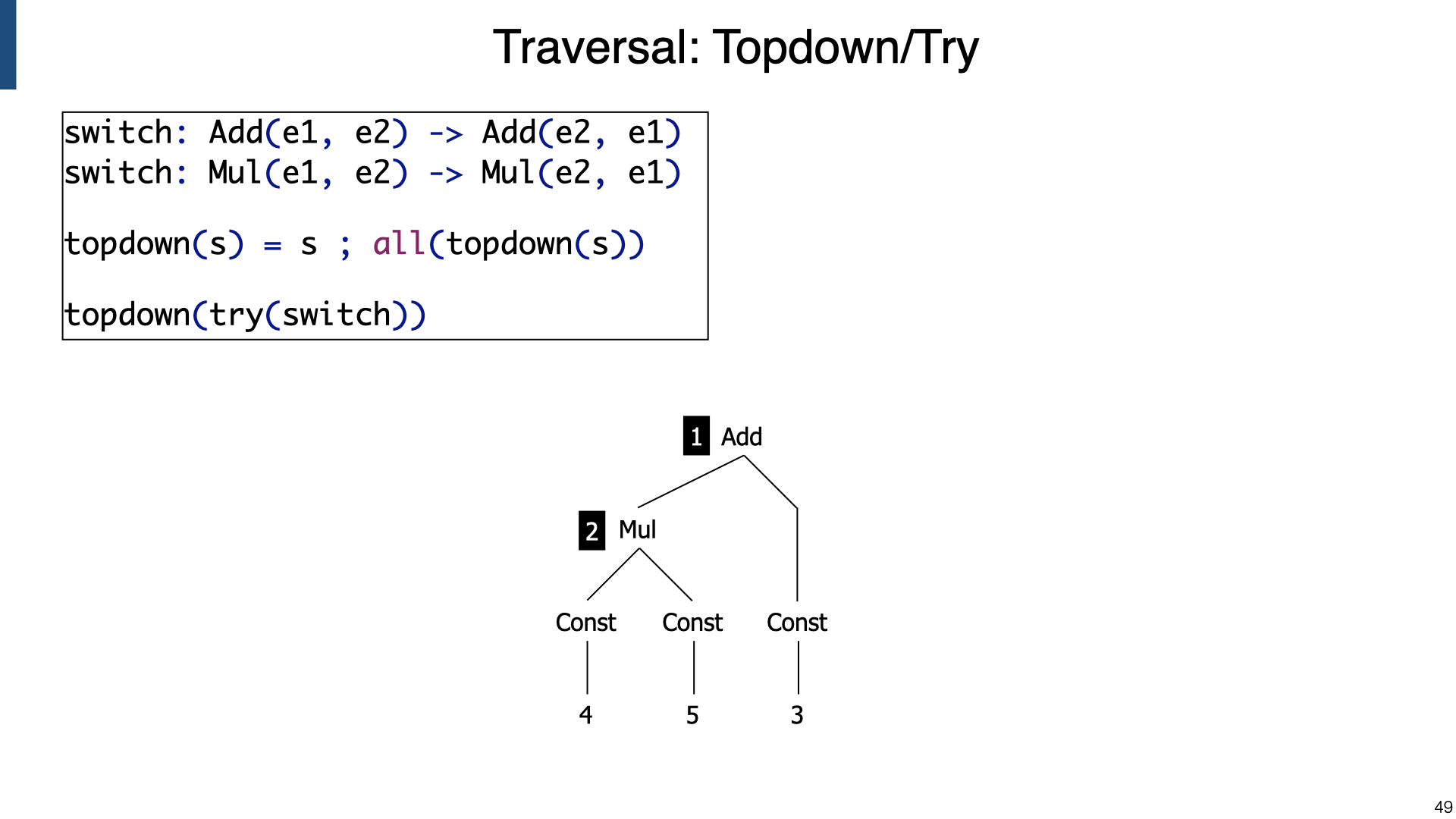
Lecture 11: Nano-Pass Compiler Architecture & Composing Transformations with Strategy Combinators
Eelco Visser
Lecture
| PDF
November 18, 2021
In this lecture we take a first look at Jeremy Siek’s nano-pass compiler architecture.
Furthermore, we study how rewrite rules and strategies are composed from basic strategy combinators. The basic building blocks of transformation are matching and building terms. These are composed using combinators including sequential composition and (left) choice into more complext strategies. To define traversal strategies that apply transformations throughout a term, we define one-level traversal primitives. These can be used to define a variety of traversals, including top-down, bottom-up, and innermost.
Slides
References
-
The applicability of term rewriting to program transformation is limited by the lack of control over rule application and by the context-free nature of rewrite rules. The first problem is addressed by languages supporting user-definable rewriting strategies. The second problem is addressed by the extension of rewriting strategies with scoped dynamic rewrite rules. Dynamic rules are defined at run-time and can access variables available from their definition context. Rules defined within a rule scope are automatically retracted at the end of that scope. In this paper, we explore the design space of dynamic rules, and their application to transformation problems. The technique is formally defined by extending the operational semantics underlying the program transformation language Stratego, and illustrated by means of several program transformations in Stratego, including constant propagation, bound variable renaming, dead code elimination, function inlining, and function specialization.
-
We describe a language for defining term rewriting strategies, and its application to the production of program optimizers. Valid transformations on program terms can be described by a set of rewrite rules; rewriting strategies are used to describe when and how the various rules should be applied in order to obtain the desired optimization effects. Separating rules from strategies in this fashion makes it easier to reason about the behavior of the optimizer as a whole, compared to traditional monolithic optimizer implementations. We illustrate the expressiveness of our language by using it to describe a simple optimizer for an ML-like intermediate representation.The basic strategy language uses operators such as sequential composition, choice, and recursion to build transformers from a set of labeled unconditional rewrite rules. We also define an extended language in which the side-conditions and contextual rules that arise in realistic optimizer specifications can themselves be expressed as strategy-driven rewrites. We show that the features of the basic and extended languages can be expressed by breaking down the rewrite rules into their primitive building blocks, namely matching and building terms in variable binding environments. This gives us a low-level core language which has a clear semantics, can be implemented straightforwardly and can itself be optimized. The current implementation generates C code from a strategy specification.